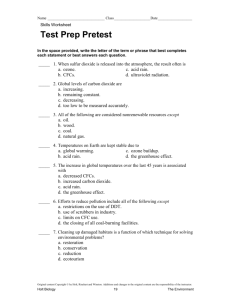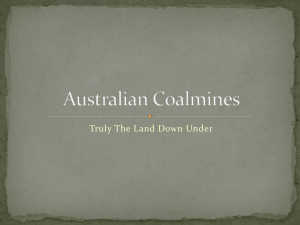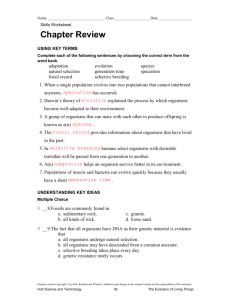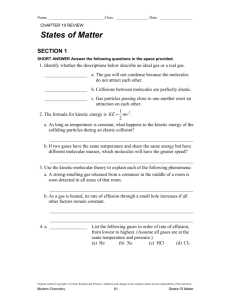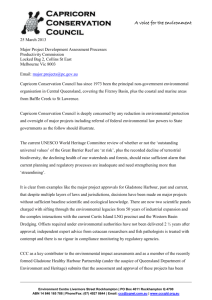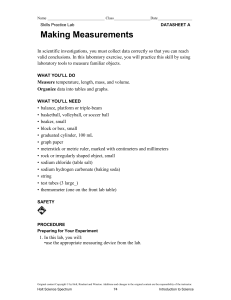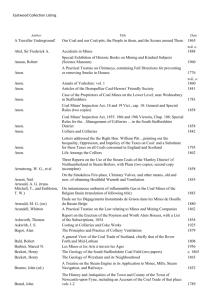Map Skills Chapter 17
advertisement
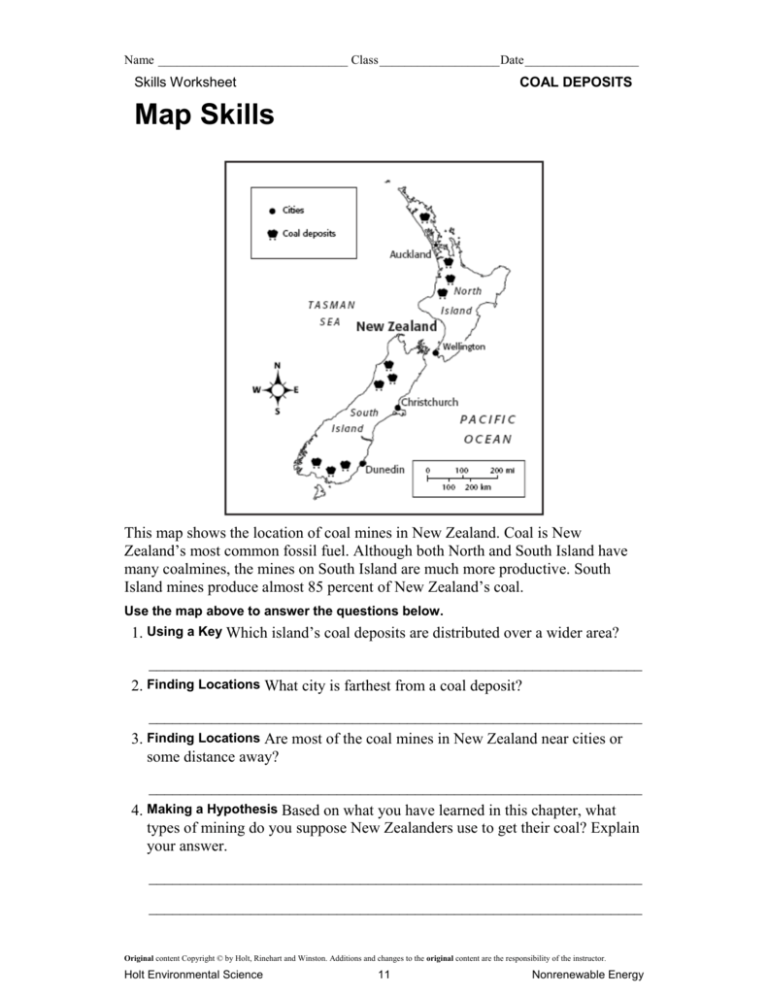
Name ______________________________ Class ___________________ Date __________________ Skills Worksheet COAL DEPOSITS Map Skills This map shows the location of coal mines in New Zealand. Coal is New Zealand’s most common fossil fuel. Although both North and South Island have many coalmines, the mines on South Island are much more productive. South Island mines produce almost 85 percent of New Zealand’s coal. Use the map above to answer the questions below. 1. Using a Key Which island’s coal deposits are distributed over a wider area? _______________________________________________________________ 2. Finding Locations What city is farthest from a coal deposit? _______________________________________________________________ 3. Finding Locations Are most of the coal mines in New Zealand near cities or some distance away? _______________________________________________________________ 4. Making a Hypothesis Based on what you have learned in this chapter, what types of mining do you suppose New Zealanders use to get their coal? Explain your answer. _______________________________________________________________ _______________________________________________________________ Original content Copyright © by Holt, Rinehart and Winston. Additions and changes to the original content are the responsibility of the instructor. Holt Environmental Science 11 Nonrenewable Energy Name ______________________________ Class ___________________ Date __________________ _______________________________________________________________ Original content Copyright © by Holt, Rinehart and Winston. Additions and changes to the original content are the responsibility of the instructor. Holt Environmental Science 12 Nonrenewable Energy TEACHER RESOURCE PAGE Quiz 6. Cars in developing countries are often older and burn gasoline that contains more sulfur. Cars in developed countries are generally newer, have catalytic converters that reduce air pollution, and burn a cleaner gasoline. 7. Oil leaks from cars spill more oil; there are more of them and their oil leaks are unregulated. 8. the formation of smog and health problems. 9. acid precipitation. 10. emissions regulations and catalytic converters. 11. If the outer hull is punctured, the oil does not leak out. 12. measures to reduce everyday contamination of waterways from oil SECTION: ENERGY RESOURCES ANDFOSSIL FUELS Matching 1. d 2. b 3. f Multiple Choice 7. b 8. d 9. d 10. c SECTION: NUCLEAR ENERGY Matching 1. b 2. d 3. f Multiple Choice 7. b 8. c SECTION: NUCLEAR ENERGY 1. neutrons 2. boron and cadmium 3. Control rods containing boron or cadmium to absorb neutrons are lowered between the fuel rods of a reactor core to slow fission reactions. 4. Fission is prevented, and the reactor is shut down. 5. 1 6. 6 7. 3 8. 7 9. 5 10. 8 11. 2 12. 10 13. 9 14. 4 15. They both produce electricity using steam. 16. They do not burn fossil fuels. 4. a 5. e 6. c 9. a 10. c Chapter Test General MATCHING 1. 2. 3. 4. 5. e i j b a 6. 7. 8. 9. 10. g d c h f MULTIPLE CHOICE 11. 12. 13. 14. 15. c d b c c 16. 17. 18. 19. 20. b a a a d Chapter Test Advanced MATCHING 1. d 2. f 3. a Map Skills 1. 2. 3. 4. 4. a 5. e 6. c South Island Wellington some distance away Answers may vary but should give examples referring to subsurface, long wall, or surface coal mining. 4. b 5. c 6. e MULTIPLE CHOICE 7. 8. 9. 10. c d a c 11. 12. 13. 14. d c a a SHORT ANSWER 15. Answers may vary. Sample answer: It takes millions of years for fossil fuels to form. At the rate we are now using Original content Copyright © by Holt, Rinehart and Winston. Additions and changes to the original content are the responsibility of the instructor. Holt Environmental Science 83 Nonrenewable Energy



